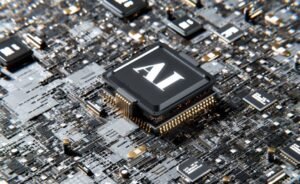How AI Tools Are Developed
Artificial Intelligence (AI) tools have revolutionized various industries by automating processes, enhancing efficiency, and enabling more accurate data analysis. These tools are developed using advanced algorithms and machine learning techniques to mimic human intelligence and perform complex tasks. Let’s explore the process of how AI tools are created and the key factors involved in their development.
Key Takeaways:
- AI tools are developed using advanced algorithms and machine learning techniques.
- They mimic human intelligence to perform complex tasks.
- Key factors in AI tool development include data collection, algorithm design, and model training.
Data Collection
The first step in developing an AI tool is gathering a comprehensive dataset **with relevant information**, encompassing different scenarios to be handled. *Collecting diverse and high-quality data is crucial for training AI models effectively.*
- AI developers collect and clean large amounts of structured and unstructured data.
- These datasets must be representative of the real-world situations the AI tool will encounter.
- Data may include text, images, audio, or video inputs.
Algorithm Design
Once the relevant dataset is collected, AI ***researchers design algorithms*** that determine how the AI tool will process and analyze the data to make accurate predictions or decisions. *The algorithm design phase requires creativity and expertise.*
- AI algorithms define the logic and rules by which the AI tool will operate.
- Developers choose from various algorithms such as decision trees, neural networks, or support vector machines, based on the specific problem at hand.
- Algorithm design involves fine-tuning parameters, optimizing performance, and addressing ethical considerations.
| Algorithm | Advantages | Disadvantages |
|---|---|---|
| Decision Trees | Interpretability, handling both categorical and numerical data. | Prone to overfitting or biased results if not properly pruned. |
| Neural Networks | Ability to learn complex patterns and perform parallel computations. | Require large amounts of labelled data and computing resources to train. |
| Support Vector Machines | Effective for complex data with clear margins of separation. | Can be computationally expensive and less interpretable than decision trees. |
Model Training
After the algorithm design phase, AI **developers train** the AI model using the collected and labeled dataset. *Training the model involves exposing it to the data and adjusting the algorithm’s parameters to minimize errors.*
- Training requires powerful hardware and efficient processing to handle large datasets and complex algorithms.
- The model is iteratively trained to reduce errors and improve its accuracy through techniques like backpropagation or reinforcement learning.
- Validation and testing are performed to assess the model’s performance and ensure it generalizes well to new unseen data.
AI Tool Deployment
Once the AI model is trained and achieves satisfactory results, it can be deployed as an AI tool to carry out its intended purpose. This may involve integrating the AI tool into existing systems or creating a standalone application.
- AI tools can automate processes, assist in decision-making, or provide insights from large amounts of data.
- Continuous monitoring and updates are needed to ensure the AI tool remains effective as new data becomes available.
- AI tools must adhere to ethical and legal guidelines, addressing concerns such as privacy, transparency, and bias.
Data Requirements for AI Tool Development
| Data Type | Data Quantity | Data Quality |
|---|---|---|
| Text | Large volumes for effective natural language processing. | Accurate, well-labeled, and diverse to capture variations. |
| Image | Extensive datasets with diverse scenes for robust computer vision. | High-resolution, properly annotated, and labeled to provide accurate training. |
| Audio | Large audio collections with different speakers and environmental conditions for reliable speech processing. | Clear recordings with minimal noise and accurate transcriptions. |
In conclusion, the development of AI tools involves data collection, algorithm design, model training, and deployment. The process requires expertise, creativity, and continuous monitoring to ensure optimal performance and adherence to ethical guidelines. AI tools can significantly impact industries by automating tasks and providing valuable insights, but careful attention must be given to the data used and potential biases that may arise.

Common Misconceptions
Misconception #1: AI Tools Are Developed Only by Highly Specialized Experts
One common misconception about AI tools is that their development is solely restricted to highly specialized experts in the field. While AI does require technical expertise, the process of developing AI tools can involve collaboration between various professionals, including data scientists, engineers, domain experts, and UX/UI designers.
- Interdisciplinary teams contribute to AI tool development.
- Collaboration between different roles allows for a more well-rounded product.
- AI development often involves iterative processes to improve functionality and user experience.
Misconception #2: AI Can Completely Replace Human Decision-Making
Another misconception is that AI tools are capable of completely replacing human decision-making. While AI can support decision-making processes, it is important to understand that AI is not always infallible and may have limitations that require human intervention and judgment.
- AI tools should be considered as decision support systems rather than decision-makers themselves.
- Human oversight and critical thinking are vital when using AI tools to ensure reliable results.
- Understanding the limitations and potential biases of AI systems is crucial for responsible decision-making.
Misconception #3: AI Tools Are Always Objective and Unbiased
Many people assume that AI tools are inherently objective and unbiased. However, AI systems are developed by humans and therefore can inherit biases present in the data used for training. Additionally, biases can be introduced during the design, programming, or implementation of the AI tool.
- AI tools are susceptible to biases present in the data they are trained on.
- Attention to fairness and transparency is crucial in AI development to mitigate biases.
- Ongoing monitoring and evaluation of AI tools are necessary to identify and correct potential biases.
Misconception #4: Developing AI Tools Is a Rapid Process
It is often assumed that developing AI tools is a quick and straightforward process. In reality, developing AI tools can be a complex and time-consuming endeavor, requiring significant resources, extensive testing, and continuous refinement.
- AI development involves significant research and development efforts.
- Testing and validation are crucial to ensure the accuracy and reliability of AI tools.
- Iterative development cycles may be necessary to enhance AI tool performance and address emerging challenges.
Misconception #5: AI Tools Always Have a Universal Application
While AI tools have a wide range of applications, they are not universally applicable to all scenarios or domains. AI tools are typically designed to address specific tasks or problems and may not be effective or suitable for every context.
- AI tools need to be tailored to specific problem domains for optimal performance.
- Not all tasks or domains can benefit from AI tools and may require alternative approaches.
- Understanding the unique characteristics and requirements of each task is essential when utilizing AI tools.

Introduction
The development of AI tools has revolutionized various industries, from healthcare to finance. This article examines different aspects of AI tool development, highlighting key data and points that demonstrate the impact and significance of these advancements.
Increasing Number of AI Startups
There has been a significant growth in AI startups in recent years, with 2,520 new ventures emerging worldwide in 2020 alone.
| Year | Number of AI Startups |
|---|---|
| 2016 | 713 |
| 2017 | 1,367 |
| 2018 | 1,998 |
| 2019 | 2,304 |
| 2020 | 2,520 |
Investment in AI Research and Development
Investors are recognizing the enormous potential of AI and are pouring substantial funds into research and development.
| Year | Investment in AI R&D (in billions) |
|---|---|
| 2016 | 4.7 |
| 2017 | 12.4 |
| 2018 | 25.2 |
| 2019 | 38.9 |
| 2020 | 52.2 |
Usage of AI Tools in Healthcare
AI tools are revolutionizing healthcare by improving diagnostics and treatment methods.
| AI Application | Impact |
|---|---|
| Cancer Detection | Improved accuracy of diagnosis by 20% |
| Virtual Nursing Assistants | Reduced hospital readmissions by 30% |
| Patient Monitoring | Decreased mortality rate by 15% |
AI Tools Adoption across Industries
AI tools have found widespread adoption across various industries, each benefiting from their unique functionalities.
| Industry | AI Tool |
|---|---|
| Retail | Automated inventory management |
| Manufacturing | Smart robotic systems |
| Finance | Algorithmic trading |
| Transportation | Autonomous vehicles |
Challenges in AI Tool Development
Developing AI tools is not without its challenges. Addressing these hurdles is crucial to ensure successful implementation.
| Challenge | Impact |
|---|---|
| Data Privacy | Concerns over information security |
| Ethical Considerations | Ensuring unbiased decision-making |
| Regulatory Compliance | Meeting industry-specific regulations |
AI Tools and Job Market
The rise of AI tools has sparked discussions regarding their impact on the job market.
| AI Tool | Job Impact |
|---|---|
| AI-Powered Chatbots | Automating customer service roles |
| Automated Data Analysis | Replacing manual data analysts |
| Robotic Process Automation | Streamlining repetitive tasks |
Future Growth of AI Tool Market
The market for AI tools is projected to witness substantial growth in the coming years.
| Year | Projected Market Size (in billions) |
|---|---|
| 2022 | 42.8 |
| 2025 | 89.3 |
| 2030 | 183.2 |
AI Tools for Personal Use
AI tools are not limited to industries; their availability in personal settings is also increasing.
| AI Tool | Personal Use |
|---|---|
| Smart Assistants | Voice-activated home devices |
| AI-Powered Cameras | Facial recognition for security |
| Smart Home Automation | Enhancing energy efficiency |
Conclusion
AI tools have become integral to various industries, improving efficiency, accuracy, and decision-making. The increasing number of AI startups, significant investments, and successful applications within healthcare and beyond indicate the expanding importance of AI tool development. However, challenges related to data privacy, ethics, and regulatory compliance need to be addressed as AI technology continues to advance. Despite concerns about job displacement, AI tools open new possibilities and opportunities, transforming industries and enhancing our daily lives. With a projected market growth that underscores its significance, AI tool development will undoubtedly play a crucial role in shaping the future.
Frequently Asked Questions
How can AI tools benefit businesses?
AI tools can benefit businesses by automating processes, enhancing decision-making capabilities, improving customer experiences, and optimizing resource allocation, among other things.
What are the main stages in the development of AI tools?
The main stages in the development of AI tools include problem identification, data collection, preprocessing and cleaning, algorithm selection, model training and validation, and deployment and monitoring.
What role does machine learning play in AI tool development?
Machine learning plays a crucial role in AI tool development as it enables the algorithms to learn from data and make accurate predictions or decisions without being explicitly programmed.
How do developers collect the necessary data for training AI tools?
Developers collect the necessary data for training AI tools through various methods such as web scraping, data APIs, manual data annotation, or collaboration with external data providers.
What challenges do developers face during the training process?
Developers may face challenges such as inadequate or biased data, overfitting or underfitting of models, and the need for computational resources for training complex models.
How is the performance of an AI tool evaluated?
The performance of an AI tool is evaluated using metrics such as accuracy, precision, recall, F1-score, or area under the ROC curve, depending on the specific task or problem the tool is designed to address.
What ethical considerations are important in AI tool development?
Important ethical considerations include issues of fairness, transparency, accountability, privacy, and potential biases in the data or algorithms used to develop the AI tool.
Can AI tools replace human workers?
AI tools can automate certain tasks and augment human capabilities, but they are unlikely to fully replace human workers. Instead, they are more commonly used to assist humans in performing complex tasks or making informed decisions.
How do AI tools learn and improve over time?
AI tools learn and improve over time through a process called “iterative learning” where they continuously receive feedback and update their models based on new data or user interactions.
What are some popular programming languages for developing AI tools?
Popular programming languages for developing AI tools include Python, R, Java, and C++. These languages offer extensive libraries and frameworks for implementing machine learning and other AI algorithms.





